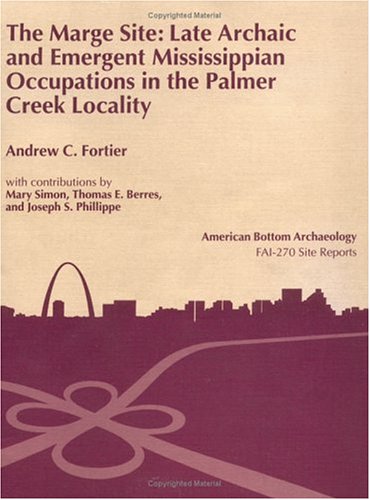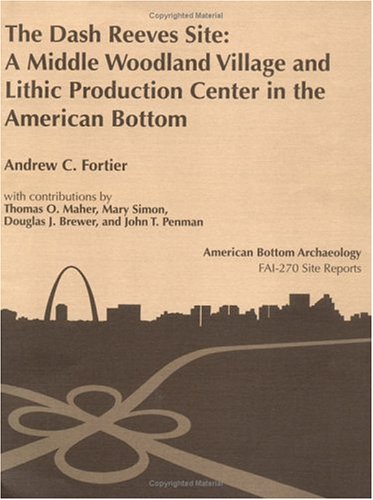American Bottom Archaeology S.
3 total works
v. 13
v. 27
The Marge Site
by Andrew C. Fortier, Mary Simon, Thomas Edward Berres, and Joseph S. Phillippe
Published 1 December 1996
v. 28
"This newest addition to the American Bottom Archaeology series reports on the Dash Reeves site, an extensive Middle Woodland habitation site that represents a major floodplain village and locality for the production of stone tools.The village area consists of clusters of pits and a dense refuse heap containing hundreds of diagnostic Middle Woodlands artifacts: an extensive collection of lamellar blades and blade cores, projectile points, Hill Lake ceramics, a diversity of flake, blade, and core tools, and several exotic Hopewell-like pieces, including earspool and human figurine fragments.Inhabited between 150 A.D. and 300 A.D., during the Hill Lake phase, Dash Reeves appears to have been an important locus of interaction with peoples far to the south. The production of blades at Dash Reeves, especially those made of local colorful red and blue Ste. Genevieve cherts, possibly served as the focal point of a far-reaching blade-exchange system in the Midwest.Focusing on one of the most significant archaeological regions in North America, the American Bottom Archaeology series documents the excavation of sites affected by the construction of Interstate Highway 270 on the Mississippi River floodplain in Illinois counties across the river from St.
Louis. The series is cosponsored by the Federal Highway Administration and the Illinois Department of Transportation. Volumes on individual sites are supplemented by a summary volume on the FAI-270 Project's contribution to the culture history of the Mississippi River Valley."
Louis. The series is cosponsored by the Federal Highway Administration and the Illinois Department of Transportation. Volumes on individual sites are supplemented by a summary volume on the FAI-270 Project's contribution to the culture history of the Mississippi River Valley."


